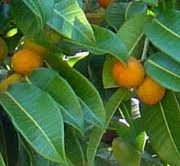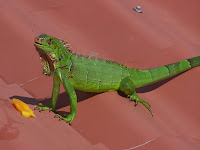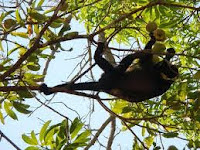 Every time we tell friends and family, we live in Ojochal; the look in their eyes is priceless; some times they can hardly repeat the word. Of course, the next question is: what does Ojochal mean? Does it mean anything, or is just a made-up word?
Every time we tell friends and family, we live in Ojochal; the look in their eyes is priceless; some times they can hardly repeat the word. Of course, the next question is: what does Ojochal mean? Does it mean anything, or is just a made-up word? Since I did not know the answer when we first moved to this beautiful town; I decided to research and find out what Ojochal means:
Ojochal is a name given to a large area of land populated with ojoche trees. In fact, this beautiful town by the name of Ojochal was a non-populated area, only covered with these trees during the mid 1930's.
The first families moving into the area appreciated the trees for their fruit and shade and decided to call the place “Ojochal.” These pioneer families acknowledged the nutritional and overall value of this magnificent tree. Unfortunately, during the 1950s, the town had grown a lot, and the need for cattle land promoted the logging of the ojoche trees, running them into extinction.
The first families moving into the area appreciated the trees for their fruit and shade and decided to call the place “Ojochal.” These pioneer families acknowledged the nutritional and overall value of this magnificent tree. Unfortunately, during the 1950s, the town had grown a lot, and the need for cattle land promoted the logging of the ojoche trees, running them into extinction.
A group of women of Ojochal, under the group name of “AMO” (Asociación de Mujeres de Ojochal), recently started the Ojoche rescue project, it consists on planting ojoche trees in some strategic areas within the town. They started with the first Ojoche tree near the Public Library. This rescue program is aiming to provide Ojochal with part of its historic identity, and most importantly, provide the community with the high nutritional and economic benefit this species has to offer.
The scientific name to the ojoche tree is brosimum, and it is known as Maya Nut. The commercial names for their wood are letterwood or snakewood.
This tree is a proud giant of our forests. Sometimes; it produces a red hearthood of incomparable quality and appearance; however, nobody knows why some trees do not have that kind of wood.
1- Brosimum guianense, this is the ojoche with the heartwood, which color ranges from dark red to reddish brown with irregular radial black markings, or black vertical stripes alone or in conjunction with speckles. Its wood has been used for quality furniture.
2- Brosimum alicastrum, this is the ojoche with no reddish heartwood; the wood is entirely white-yellowish. Its wood is much lower in quality, and has been used in construction.
Both types are considered as heavy wood, and both represent an important source of food. It is a big tree, usually up to 20 to 40 mt. (65.5 to 131.2 ft) in height, and a diameter of 50 to 90 cm (19.7 to 35.4 inches). These trees grow in hot-humid and sub-humid tropical forests. You can find them from sea level to about 1000 mt. (3281 ft.) above sea. They grow better in well-drained soils; however, they are very adaptable.
The Ojoche is an amazing tree; it does not need special irrigation or specific care. It is drought resistant, and it has a good performance despite the climatic changes within the country. It provides habitat and food for animals and birds.
This is one of the tropical trees, of which one can take advantage of all its parts, whether foliage, bark, branches, sap, fruit, and seeds.
This is one of the tropical trees, of which one can take advantage of all its parts, whether foliage, bark, branches, sap, fruit, and seeds.
The Ojoche or Maya Nut was the staple of the pre-hispanic cultures throughout the tropical areas. They protected the trees because their fruit attracted their favorite game species like deer, wild pigs, among others. In recent history, thousands of villages have survived drought and war by eating Maya Nut when no other food was available. Over the years, the use of the ojoche as the mean of food source got lost in time, giving place to the corn, wheat, and rice because they were easier and faster to cultivate.
The ojoche tree takes between 25 and 30 years to bear fruits. After such long waiting time, the ojoche tree provides an abundant production of fruit and seeds; somewhere between 50 and 75 kilos (110-165 pounds) per tree.
 Between 1953 and 1954, the North Pacific of Costa Rica experienced a long drought. During that time, all the crops were lost; the wells and springs dried up, but providentially, ojoche trees (Maya nut) produced enough fruit throughout the 24-month period, feeding thousands of families.
Between 1953 and 1954, the North Pacific of Costa Rica experienced a long drought. During that time, all the crops were lost; the wells and springs dried up, but providentially, ojoche trees (Maya nut) produced enough fruit throughout the 24-month period, feeding thousands of families. The little fruit is round and orange in color, and has a citrus smell; the pulp can be eaten raw or made into preserve.
The seed is full of nutrients, including antioxidants. One can compare this seed to quinoa, soy, and amaranth. It contains good levels of Vitamin A, Vitamin B, Vitamin C, and Vitamin E. It is also high in calcium, potassium, fiber, protein, iron, zinc, and folic acid.
http>//mayanutinstitute.org/page.cfm?pageid=18914 The seeds can be eaten boiled, roasted, or raw. If they are boiled, the nut has a taste similar to the mashed potato, and they are commonly used in soups, puree, burgers, tortillas, etc. The toasted seeds taste like coffee or chocolate, and they are used in drinks, cookies, breads, cakes, and other sweet desserts.
Here are some other interesting facts:
- The sap of this tree is used to cure asthma and anemia in central and South American Countries.
- The dried nuts can be stores up to five years.
- It helps in the preventions of osteoporosis and arthritis.
- It is a good remedy against insomnia and anxiety.
In Costa Rica, there are several organized groups, already working towards the goal of bringing back the “Ojoche Tree” as an integral part of the culture and economy in this country.


















